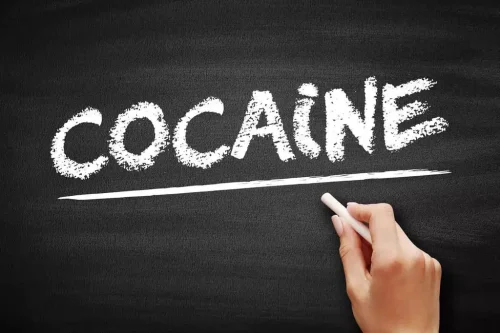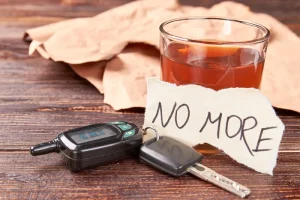This includes maintaining client confidentiality, providing non-discriminatory services, and continually updating their skills and knowledge through professional development. This certification is intended for professionals who wish to attain a foundational knowledge of tobacco addiction and develop skills that will enhance counseling strategies when working with tobacco addicts. This certification is intended for professionals in addiction-related positions who want to demonstrate the skills they’ve gained during supervised work experiences.

What Is A CADC Certification?
On the other hand, if you are already working in the field of drug and alcohol counseling, or if you simply want to gain more knowledge about the subject, then obtaining a certificate may not be necessary. In such cases, taking courses or attending workshops related to addiction counseling may be sufficient. The cost for substance abuse counseling obtaining either certification varies depending on the training program chosen. Generally speaking, it can range from $400 to $1,000 or more for both certifications combined. It typically takes between 6 months and 1 year to complete both certifications depending on the individual’s schedule and commitment to studying.
Accredited Financial Counselor (AFC)
After completing the degree program, applicants must take and pass the NCCAP exam in order to receive their certification. The certificate serves as proof that the individual has been educated on the topics of addiction, mental health, and other related topics. It also demonstrates their understanding of how to provide effective counseling services to those in need. By obtaining a substance abuse counselor certificate, counselors can be confident that they have the qualifications and experience required to work with clients struggling with addiction.
Training former substance abusers to be part of treatment teams – The Hechinger Report
Training former substance abusers to be part of treatment teams.
Posted: Tue, 02 Aug 2022 07:00:00 GMT [source]
The Many and Varied Types of Substance Abuse Counselors
Additionally, organizations like the Association for Addiction Professionals (NAADAC) and International Certification & Reciprocity Consortium / Alcohol and Other Drug Abuse Inc. (IC&RC) offer a number of professional certifications. While these credentials don’t replace those required by your state, they are nationally standardized and do indicate a certain level of training, education, and experience. If most addiction professionals offer patients the same kind of services, why are there so many titles? While all who possess and maintain their credentials can usually conduct patient assessments, diagnosis, evaluations, and treatments, as well as provide individual and group counseling sessions, certification type matters. At Hazelden Betty Ford, you’ll have the opportunity to learn from top counseling experts at the nation’s leading nonprofit addiction treatment center.
Certified Grief Counselor (CGC)
- Further complicating the matter is that mental health (a common co-occurring disorder) often factors into the addiction treatment protocol.
- Candidates for certification should also complete 6,000 hours or three years of supervised, full-time experience as a substance abuse/addiction counselor.
- Those who earn the CLC designation will need to recertify every three years by completing 18 hours of continuing education.
- In a majority of cases, addicts or affected people approach substance abuse and addictions counselors when they’re ready.
The amount of time it takes to get certified depends on several factors such as the type of certification you are seeking and how quickly you complete your training program or other requirements needed for certification eligibility. Generally speaking, it can take anywhere from six months to two years or more to become certified as a substance abuse counselor. Yes, a substance abuse counselor certificate is essential for anyone wanting to pursue a career in counseling individuals with substance abuse issues. A certificate in this field indicates that the holder has undergone proper training and has acquired the necessary knowledge and skills to effectively counsel those suffering from addiction. When the typical patient or their family thinks about drug treatment, they don’t often understand how varied and diverse substance abuse counseling can be.
A person is considered to have useful knowledge in the field if they’ve been sober and clean for at least two years. Some experience in the field, through an internship or other supervised practice, will always be advantageous. Yes, pursuing LADC licensure or certification involves costs, including tuition for educational programs, fees for the examination, and any required continuing education. Additionally, you may need to invest in study materials and professional association memberships. Some states may require candidates to hold a master’s degree in counseling, psychology, or a related field for LADC licensure.
What are the potential career paths with CADC certification?
- Some counselors have the passion to pursue every available addiction counseling license or certification.
- Examinations, ethics courses, background checks, and references are frequent education requirements for licensure.
- Without this desire, neither the addict nor the therapist will likely be able to accomplish much other than wasting a lot of time.
Substance use disorder counseling is a field rich with variety, allowing counselors to specialize in different areas based on their interests and the needs of their communities. These specializations can enhance a counselor’s ability to provide targeted support and may influence their career trajectory. This certification is intended for individuals with a personal history of addiction and/or mental illness who provide quality recovery support services. This certification is intended for professionals who ensure addiction programs remain true to their promise to encourage public safety and well-being.
LADC Licensure
This form of treatment can be done at a doctor’s office or via telehealth appointment. The FHE Health team is committed to providing accurate information that adheres to the highest standards of writing. If one of our articles is marked with a ‘reviewed for accuracy and expertise’ badge, it indicates that one or more members of our team of doctors and clinicians have reviewed the article further to ensure accuracy. This is part of our ongoing commitment to ensure FHE Health is trusted as a leader in mental health and addiction care. How can you tell whether a therapist is suitably qualified to help you with your mental health struggles?
- Applications must include official academic transcripts, two references including one from the profession, passing scores on the NCC AP’s NCPRSS exam.
- Courses and internship experiences offered at the Hazelden Betty Ford Graduate School are designed for substance use and mental health licensure.
- Shecreates expert resources to help job seekers write the best resumes andcover letters, land the job, and succeed in the workplace.
- It is a professional credential that demonstrates an individual’s knowledge and experience in providing clinical supervision to substance abuse counselors.
- The most advanced substance abuse counselor certificates and licenses require applicants to have a master’s degree or higher.
National Certified Peer Recovery Support Specialist (NCPRSS)
Many who have recovered from their addictions wish to turn around to help others in a professional capacity. The experience requirement is also lower than what is required of other certificate holders as applicants need only 200 hours of direct practice in a peer recovery environment. A supervisor must verify that experience and then an additional 60 contact hours in academic training is required. Of that, 48 hours must be in the fields of case management, community/family education, screening/intake, or basic pharmacology, among other topics. The remaining twelve hours should be split between ethics training and HIV/other pathogens education. Note that any college credit can be applied towards education/training for this credential.






